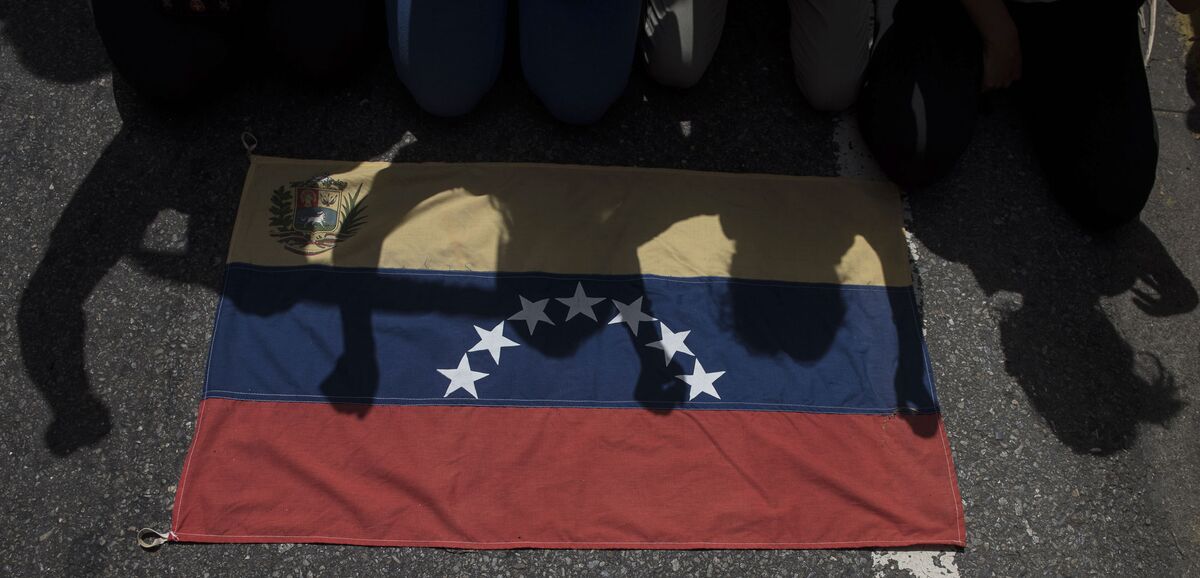
More than two months of protests have left nearly 70 dead
After more than 70 days of protests against President Nicolas Maduro, Venezuela’s bitter political standoff has burned down to a fiery core.
Anti-government demonstrations once drew turnouts of over a million, but weeks of tear gas and water-cannon blasts have dissuaded casual protesters. Those who remain are more strident, more disruptive and more willing to confront security forces, who intensify their response in turn. The result is that the mounting pressure has created a sense of bedlam on Venezuela’s streets as opposition leaders vow protests will drag on.
“This is a country long accustomed to immediate answers, but people no longer ask, ‘Until when?’ Rather, ‘What comes next?’” said Miguel Pizarro, a 29-year-old lawmaker who is part of the opposition coalition.
The loosely allied opposition parties have been trying to oust the ruling socialist regime since former President Hugo Chavez rose to power almost two decades ago. As the economy collapses, unrest has engulfed most major cities and violent clashes, looting and arson have dragged on for days in the countryside. Even the poor -- long the ruling socialists’ base -- have taken to the streets as basic services and staples fail to arrive to the country’s slums.
Protest invitations promote peaceful dissent, but demonstrators have hardened their tactics as they meet police. Prevented from marching across the capital, they erect barricades out of trash and debris to block traffic. They hurl stones and Molotov cocktails at national guardsmen in standoffs that drag on into night. Buses and government buildings -- even bystanders -- have been set ablaze.
Brazen Grab
Scenes of chaos emerge almost daily.
During the evening commute May 31, a protest raged in eastern Caracas even as residents made their way home across the traffic-choked city by car and bus.
A half-dozen masked demonstrators wielding sticks and homemade shields piled on a flatbed truck and commandeered it. Some were on the cab roof, others on the hood or hanging out the doors. They cut across lanes, chanting “this government will fall” as they cruised to the front lines a few blocks away with the intention of blocking traffic where their comrades were squaring off with security forces.
Scores of motorists saw it happen, and waiters watched from nearby restaurants with little reaction. Civil disorder has so engulfed the city that a carjacking felt routine.
Read more: Why Critics Call Venezuela’s Debt ‘Hunger Bonds’ - QuickTake Q&A
All the while Maduro has pressed on. Cracks in his administration have become fissures. And rather than yield to pressure at home and abroad to hold elections, he has opted to rewrite Venezuela’s constitution altogether -- potentially doing away with the electoral calendar entirely.
“It’s not a fire extinguisher, it’s a can of gasoline,” said Phil Gunson, a Caracas-based analyst for the International Crisis Group.
The unrest is closing in on downtown Caracas, where the presidential palace and ministries are located. On Monday, blocks of a major artery on the capital’s east side, where protesters regularly rally, erupted in mayhem. A Supreme Court office was burned in broad daylight, a private bank was looted and a government ministry was attacked with rocks and Molotov cocktails.
But after two and a half months of street action that have claimed about 70 lives and left thousands injured and jailed, the opposition’s key demand -- fresh elections -- is still nowhere in sight. Pizarro, who has been among the principal proponents of street action, cautions that change will be slow, and that “the streets are a means, but not an end.”
Fury Coalesces
The protests began as sputtering, disorganized demonstrations against government overreach, but quickly morphed into a nationwide movement against Venezuela’s myriad woes. Triple-digit inflation, hours long waits to find basic staples like chicken or toothpaste, rampant crime and corruption: Reasons to protest abound.
But the peaceful masses are slowly peeling away as life grinds on. Restaurants remain open in Caracas’s relatively prosperous neighborhoods while bloody standoffs unfold blocks away. Across town, some slum dwellers and working-class residents say they are unaware of protests. Others say they avoid unrest entirely out of fear or fatigue, or simply because of the need to make ends meet.
What remains for the most part are militants increasingly inured to danger. Fresh scenes of violence flood Facebook and Instagram pages as the toll of dead and injured rises. Bloody images are uploaded every day.
Last week, a 17-year-old demonstrator was killed in the capital, falling dead feet away from Pizarro, the lawmaker. The congressman who was cool and eloquent the day before was now trembling as he spoke to reporters.
“For this to stop happening, we need to change this country,’’ he said through tears.


0 comments:
Post a Comment